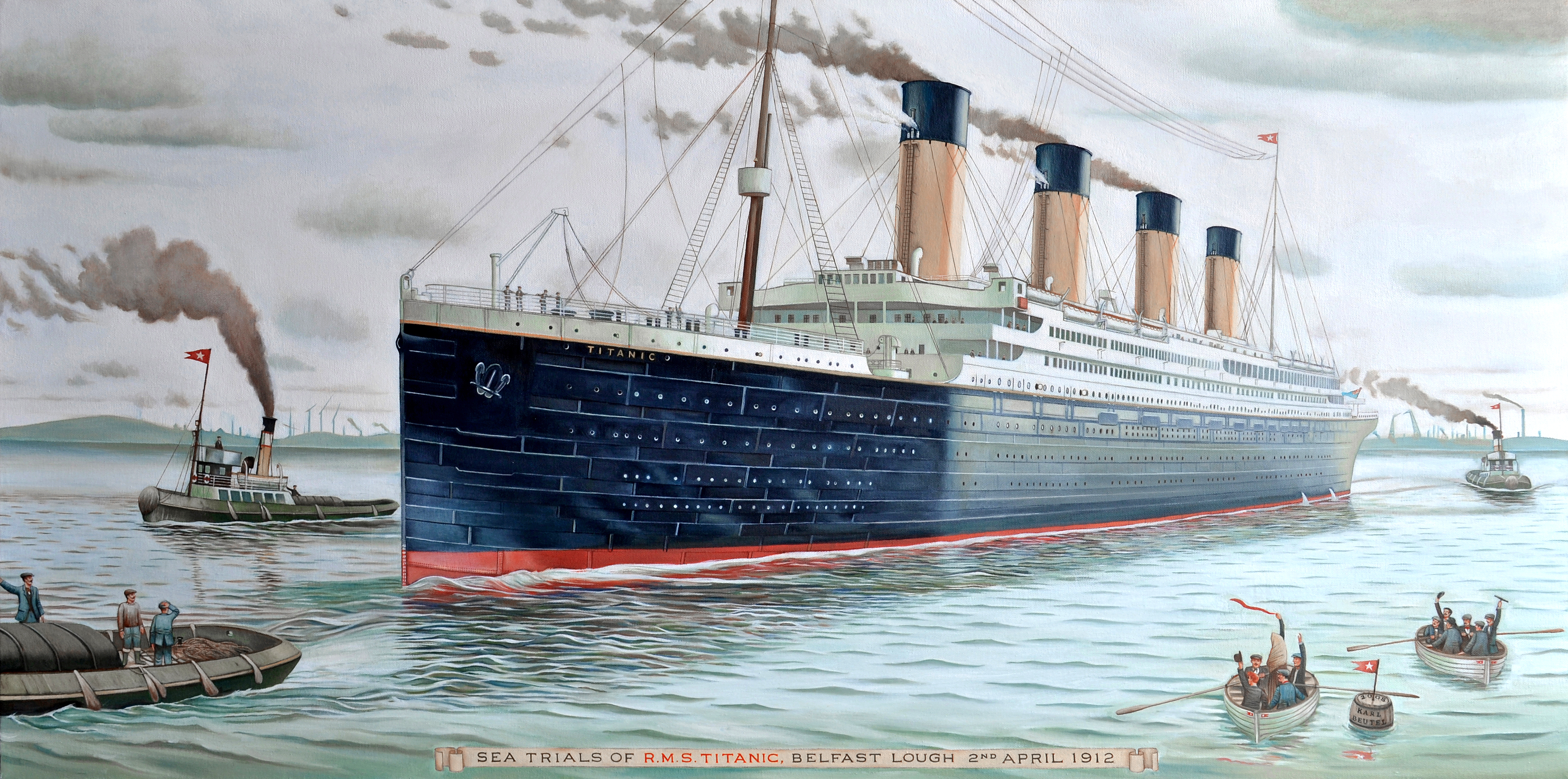
Step aboard with us as we journey back in time, not just to a ship, but to a grand vision that defied the ordinary. Imagine a floating palace, a testament to human ingenuity and ambition, designed to be the very last word in comfort and luxury. This wasn’t just any vessel; it was the RMS Titanic, a name that still echoes with fascination and a touch of melancholy over a century later.
At the dawn of the 20th century, the North Atlantic was a fiercely competitive arena for ocean liners. Rival companies vied for supremacy, each launching faster, larger, or more luxurious ships to capture the lucrative transatlantic passenger trade. The Cunard Line, aided by the Admiralty, had made waves with its swift twin sister ships, Lusitania and Mauretania, the fastest passenger vessels then in service. Not to be outdone, German lines like Hamburg America and Norddeutscher Lloyd also presented formidable challenges.
But the White Star Line, a prominent British shipping company, had a different strategy in mind. Their chairman, J. Bruce Ismay, preferred to compete not on sheer speed, but on unparalleled size and opulence. In mid-1907, a pivotal discussion between Ismay and the American financier J. P. Morgan, who controlled White Star Line’s parent corporation, the International Mercantile Marine Co. (IMM), laid the groundwork for a revolutionary new class of liners.

Ismay envisioned ships larger than anything seen before, vessels that would redefine luxury at sea. These new liners would be so efficient they could maintain a weekly service with only three ships, replacing older, slower ones like RMS Teutonic and RMS Majestic. This bold vision was entrusted to Harland & Wolff, the esteemed Belfast shipbuilder, which had enjoyed a long and fruitful relationship with the White Star Line dating back to 1867.
Harland & Wolff were given an extraordinary amount of creative freedom and financial leeway. Cost considerations, surprisingly, were a relatively low priority. They were authorized to spend whatever was needed on these magnificent vessels, plus a generous five percent profit margin. The initial agreement for the first two ships, which would become Olympic and Titanic, was set at a staggering £3 million, equivalent to approximately £370 million in 2023, plus “extras to contract” and the standard five percent fee.
The design team assembled for these Olympic-class vessels was truly exceptional. Leading the charge was Lord Pirrie, a director for both Harland and Wolff and the White Star Line, bringing a unique dual perspective. He was joined by Thomas Andrews, the brilliant chief naval architect and managing director of Harland and Wolff’s design department, who would tragically perish with his creation. Edward Wilding, Andrews’s deputy, meticulously handled the ship’s design, stability, and trim calculations. Alexander Carlisle, the shipyard’s chief draughtsman and general manager, oversaw decorations, equipment, and general arrangements, including the crucial implementation of an efficient lifeboat davit design.
By July 29, 1908, the detailed drawings were presented to Ismay and other White Star Line executives. Two days later, Ismay gave his official approval, signing three “letters of agreement” that greenlit the monumental undertaking. The first ship, initially referred to simply as “Number 400” as it was Harland and Wolff’s 400th hull, would eventually become RMS Olympic. The Titanic, based on a revised version of the same groundbreaking design, was assigned the number 401.

And what a design it was! At 882 feet 9 inches (269.06 m) long with a maximum breadth of 92 feet 6 inches (28.19 m), Titanic was a colossal achievement. From the base of its keel to the top of its bridge, the ship towered 104 feet (32 m) high. It registered an impressive 46,329 GRT (gross register tonnage) and displaced 52,310 tonnes. These were not just numbers; they represented the largest ship afloat upon its completion, a true titan of the seas.
The ship featured ten decks in total, with eight dedicated to passenger use, each designed for specific purposes and classes. From the very top, we had the Boat Deck, where the lifeboats were housed, and from where they would famously be lowered into the North Atlantic. This deck also included the bridge, wheelhouse, captain’s and officers’ quarters, the First Class Grand Staircase entrance, gymnasium, and even kennels for first-class passengers’ beloved dogs.
Just below, A Deck, also known as the promenade deck, stretched an impressive 546 feet (166 m) along the entire superstructure, reserved exclusively for First Class passengers. It boasted their luxurious cabins, the reading and writing room, lounge, smoke room, and the elegant Palm Court. Moving down to B Deck, the bridge deck, we find even more palatial First Class staterooms, some with their own private promenades. This deck was home to the exquisite à la carte restaurant and the charming Café Parisien, both offering luxury dining under subcontracted chefs who, sadly, were all lost in the disaster.
C Deck, the shelter deck, was unique in running uninterrupted from stem to stern, encompassing well decks and serving as part of the Third-Class promenade. This deck housed crew cabins forward and Third-Class public rooms aft, with the majority of First Class cabins and the Second-Class library nestled in between. Below that, D Deck, the saloon deck, was a hub of activity, dominated by three grand public rooms: the First-Class reception room, the First-Class dining saloon (the largest room afloat, seating nearly 600 passengers), and the Second-Class dining saloon. This deck also included the ship’s galleys and an open space for Third Class passengers.
Product on Amazon: Hampton Nautical RMS Titanic Cruise Ship, 14″ , White
Brand: Visit the Hampton Nautical Store
Price: 40.8 USD
Rating: 4.5 Total reviews: 315
Features:
1. Arrives fully assembled with all rigging taut
2. Built from scratch by our master artisans
3. Built from high quality woods
Top Review from US: “I bought this as a gift for my son (6 yrs old) and he loves it. This model has nice funnel, it has good looking lifeboats, my son also likes the flags on the ship.This is a very detailed model of the original ship. It is completely built model so we do not have to assemble it.I would recommend it this model to any Titanic fanatic :-)”
Shopping on Amazon >>
Read more about: On the Precipice: Critical Warning Signs That Nations and Economies Are Nearing the Brink
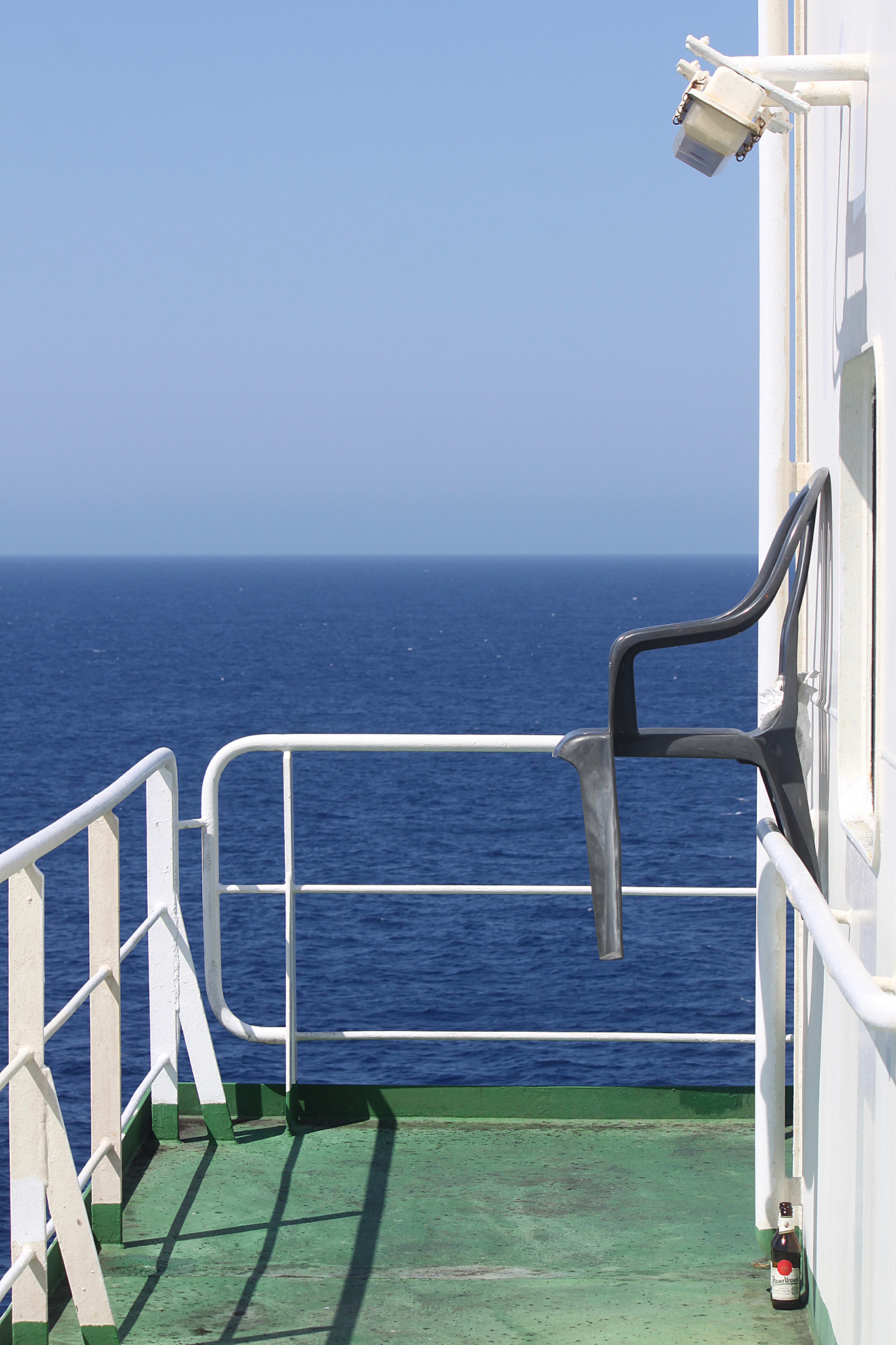
E Deck, the upper deck, was primarily devoted to passenger accommodation across all three classes, along with berths for various crew members. Running its length was a long passageway nicknamed ‘Scotland Road,’ a nod to a famous street in Liverpool, primarily used by Third Class passengers and crew. Further down, F Deck, the middle deck, mainly accommodated Second- and Third-Class passengers and several crew departments. Crucially, it also housed the Third Class dining saloon and the luxurious First Class bath complex, featuring the swimming pool and the Victorian-style Turkish bath.
Finally, G Deck, the lower deck, sat just above the waterline, identifiable by its lowest portholes. Here, one could find the First-Class squash court and the bustling travelling post office, where five postal clerks worked tirelessly to sort up to 60,000 items daily. Food storage was also located here. Below these, the orlop deck and the tank top, the ship’s absolute lowest levels, housed water and ballast tanks, and provided the platform for the immense boilers, engines, turbines, and electrical generators, areas strictly off-limits to passengers.
Powering this colossal vessel was a truly innovative propulsion system. Titanic utilized three main engines: two reciprocating four-cylinder, triple-expansion steam engines and one centrally placed low-pressure Parsons turbine, each driving a propeller. The reciprocating engines delivered a combined 30,000 horsepower, while the steam turbine added another 16,000 horsepower. This hybrid system, successfully proven on an earlier White Star liner, the Laurentic, offered a superior blend of performance and efficiency. Reciprocating engines alone couldn’t achieve the desired speeds, while all-turbine systems, like those on Cunard’s Lusitania and Mauretania, caused uncomfortable vibrations. By combining them, fuel usage was reduced, motive power increased, and the ride remained smooth.
These monstrous reciprocating engines, each 63 feet (19 m) long and weighing 720 tonnes, were fed by steam from 29 boilers—24 double-ended and five single-ended—containing a total of 159 furnaces. Each boiler was a behemoth, 15 feet 9 inches (4.80 m) in diameter and 20 feet (6.1 m) long, weighing 91.5 tonnes and holding 48.5 tonnes of water. Keeping these furnaces blazing required an astonishing effort: over 600 tonnes of coal shoveled in by hand daily, necessitating 176 firemen working around the clock. And every day, 100 tonnes of ash had to be disposed of into the sea. It was relentless, dirty, and dangerous work, highlighting the sheer human effort behind the ship’s immense power.
Read more about: Inside the Rise of ‘Perpetual’ Cruises: Exploring Costs, Lifestyles, and What it Takes to Live at Sea Permanently

The exhaust steam from the reciprocating engines then flowed into the turbine, situated aft, before passing into a surface condenser to optimize efficiency and allow the steam to be condensed back into reusable water. Three propellers, one for each engine, drove the ship forward. The two outer (wing) propellers were massive, 23.5 feet (7.2 m) in diameter with three manganese-bronze alloy blades. The slightly smaller middle propeller, 17 feet (5.2 m) in diameter, could be stopped but not reversed.
Titanic’s electrical plant was a marvel of its own, capable of producing more power than an average city power station of the time. Four 400 kW steam-driven electric generators, supplemented by two 30 kW auxiliary generators for emergencies, provided ample power. Their strategic location in the stern meant they remained operational until the very last minutes before the ship sank, a testament to thoughtful engineering. Interestingly, the ship lacked a searchlight, in adherence to the merchant navy’s ban on their use at the time.
The reputation of the Titanic as “unsinkable” was bolstered by its advanced safety features. Its interior was subdivided into 16 primary compartments by 15 bulkheads that extended above the waterline. Eleven vertically closing watertight doors on the orlop deck could be closed automatically from the bridge, by a lever at the door, or by an automatic buoyancy mechanism if water reached six feet. Other horizontally closing watertight doors along ‘Scotland Road’ secured crew and Third Class spaces. These features contributed to the pervasive belief in the ship’s invulnerability, a belief tragically put to the ultimate test.

Even the humble rudder was a feat of engineering, measuring a colossal 78 feet 8 inches (23.98 m) high and 15 feet 3 inches (4.65 m) long, weighing over 100 tonnes. Its immense size necessitated powerful steering engines to move it, with two steam-powered engines installed (one active, one reserve). The ship’s waterworks were equally impressive, capable of heating and pumping water throughout the vessel via a complex network, and even distilling fresh water from seawater in an emergency. A sophisticated network of insulated ducts and electric fans provided warm air, with First-Class cabins enjoying additional electric heaters.
Communication was state-of-the-art for its time, thanks to the Marconi International Marine Communication Company, which leased equipment and supplied operators Jack Phillips and Harold Bride. The radio room, located on the Boat Deck, maintained a 24-hour schedule, handling passenger “marconigrams” as well as vital navigation messages, including weather reports and ice warnings. Titanic’s 5-kilowatt rotary spark-gap transmitter was one of the most powerful in the world, broadcasting over a radius of 350 miles, and had a distinctive musical tone that set it apart from other signals.
The passenger facilities aboard Titanic truly set a new standard for luxury at sea. The ship could accommodate 833 First Class, 614 Second Class, and 1,006 Third Class passengers, totaling 2,453. With over 900 crew, the full carrying capacity for passengers and crew was approximately 3,547. Unlike earlier liners, which resembled manor houses, Titanic’s interior design was lighter, more akin to contemporary high-class hotels, with the Ritz Hotel serving as a key reference point.
First Class cabins, finished in the Empire style, and other public rooms across First and Second Class, showcased a blend of decorative styles from Renaissance to Louis XV. The aim was to make passengers feel as if they were in a grand floating hotel, not just a ship. As one passenger eloquently put it, upon entering, one would “at once lose the feeling that we are on board ship, and seem instead to be entering the hall of some great house on shore.” These cabins even had buttons to summon a steward, a touch of personal service for the elite.
Product on Amazon: PrintHive3d Split In Half Action Titanic Toy, Break In Half RMS Titanic Toys For Kids,Titanic Toy, Titanic Ship, Titanic Cake Topper, Historically Accurate BreakableTitanic Boat, Titanic Replica
Brand: Visit the Handmade Store
Price: 28.99 USD
Rating: 4.7 Total reviews: 5
Features:
1. Full Color
2. Pre-Assembled
3. Break-In-Half
Top Review from US: “Made very well. Is small but very detailed and would buy it again”
Shopping on Amazon >>

The First Class amenities were truly spectacular. Guests could enjoy a 7 ft (2.1 m) deep saltwater swimming pool, a gymnasium equipped with the latest exercise machines, and a squash court. The Victorian-style Turkish bath complex included hot, warm, and cooling rooms, along with shampooing (massage) rooms, a steam room, and an electric bath. Common rooms were breathtaking in their scope and lavish decoration, featuring a lounge in the style of the Palace of Versailles, an enormous reception room, a men’s smoking room, and a serene reading and writing room.
For culinary delights, First Class passengers had access to the à la carte restaurant, run as a concession by the famous Italian restaurateur Gaspare Gatti, echoing the Ritz Hotel’s prestige. Adjacent to it was the charming Café Parisien, decorated like a French pavement café with ivy-covered trellises and wicker furniture, offering the finest French haute cuisine for an extra cost. The Verandah Café provided stunning ocean views with tea and light refreshments. The dining saloon on D Deck, designed by Charles Fitzroy Doll, was a monumental space, capable of seating almost 600 passengers at a time, making it the largest room afloat.
While not as lavish as First or Second Class, the Third Class (often called steerage) accommodations aboard Titanic were a significant improvement over many other ships of the era. Traditionally, Third Class meant open dormitories with hundreds of people, often lacking adequate food or toilet facilities. But White Star Line had long broken that mold. On Titanic, Third Class was thoughtfully divided into two sections: single men quartered forward, and single women, married couples, and families aft. Instead of open berths, passengers enjoyed private, albeit small, comfortable cabins for two, four, six, eight, or ten people.
Third Class passengers also had their own dining rooms and ample public gathering areas, including generous open deck space. For men, there was a smoking room, and a general room on C Deck was available for women to use for reading and writing. This focus on individual cabins and dedicated spaces represented a significant upgrade in comfort and privacy for emigrants and those seeking new lives in the United States and Canada.
Read more about: Fly Solo: The 16 Best Single-Pilot Private Jets for 2024

Leisure was encouraged for all classes. Beyond the indoor luxuries like the library, smoking rooms, and gymnasium, passengers often socialized on the open decks, promenading or relaxing in hired deck chairs. A passenger list, published before sailing, allowed for social connections, with ambitious mothers even using it to identify potential suitors for their daughters among the wealthy bachelors on board. It was a bustling, vibrant microcosm of society.
Perhaps the most iconic feature of Titanic was its First Class Grand Staircase. Built of solid English oak, it gracefully descended through seven decks, from the boat deck to E deck, before simplifying into a single flight on F Deck. Crowned with a magnificent dome of wrought iron and glass, it bathed the stairwell in natural light. Each landing off the staircase led to ornate entrance halls, paneled in the William & Mary style and illuminated by beautiful ormolu and crystal light fixtures. At the uppermost landing, a grand carved wooden panel housed a clock flanked by figures of “Honour and Glory Crowning Time,” a poignant symbol of the aspiration and elegance of the era.
Beyond passengers, Titanic was a working vessel, designated as a Royal Mail Ship (RMS). Under contract with the Royal Mail and the United States Post Office Department, it carried substantial mail and cargo. A dedicated 26,800 cubic feet (760 m3) of space was allocated for letters, parcels, and specie (bullion, coins, and other valuables). The Sea Post Office on G Deck was a hive of activity, manned by five postal clerks who worked 13 hours a day, seven days a week, sorting mail.
Read more about: Toyota Halts 10 Production Lines in Japan After Supplier Factory Explosion
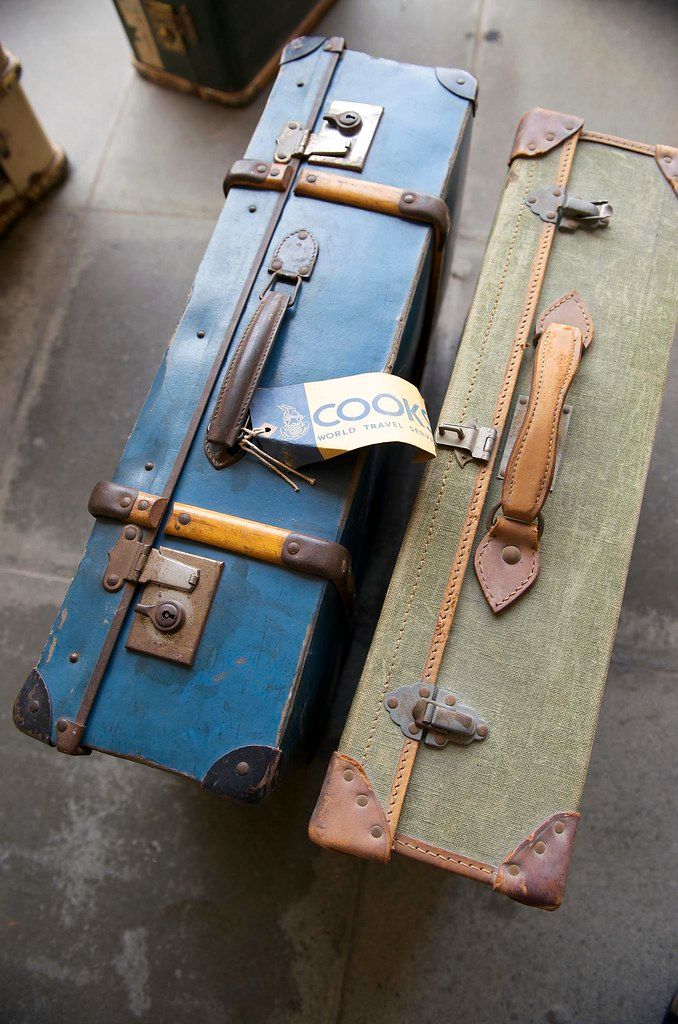
Passengers also brought a staggering amount of baggage, occupying another 19,455 cubic feet (550.9 m3) for first- and second-class belongings. The general cargo, contrary to later myths of vast treasures, was quite mundane. It ranged from furniture to foodstuffs and even included a 1912 Renault Type CE Coupe de Ville motor car. While the famously lost jeweled copy of the Rubaiyat of Omar Khayyam was valued at only £405 (£50,600 today), the single most highly valued item of luggage or cargo was a neoclassical oil painting, ‘La Circassienne au Bain’ by Merry-Joseph Blondel. Its owner, Mauritz Håkan Björnström-Steffansson, filed a claim for an astonishing $100,000 (equivalent to $2,300,000 in 2023) for its loss. Other intriguing items on the manifest included 12 cases of ostrich feathers, 76 cases of “Dragon’s Blood,” and 16 cases of calabashes, giving us a fascinating glimpse into the commercial realities of the ship.
To handle all this, Titanic was equipped with eight electric cranes, four electric winches, and three steam winches to efficiently move cargo and baggage in and out of its holds. It’s estimated that the ship consumed approximately 415 tonnes of coal while docked in Southampton just to generate steam for these cargo operations, as well as for heating and lighting. This highlights the sheer scale of the ship’s energy requirements, even before it had left port.
Another critical, and often misunderstood, aspect of the Titanic was its lifeboat provision. Like its sister ship, Olympic, Titanic carried 20 lifeboats: 14 standard wooden Harland and Wolff lifeboats, each with a capacity of 65 people, and four Engelhardt “collapsible” lifeboats (A to D), each holding 47. Additionally, there were two emergency cutters, each for 40 people. All were securely stowed on the boat deck, with the cutters kept swung out and ready for immediate use. Collapsible boats C and D were also connected to davits, while A and B, stored on the officers’ quarters roof, proved difficult to launch due to their weight and lack of davits.
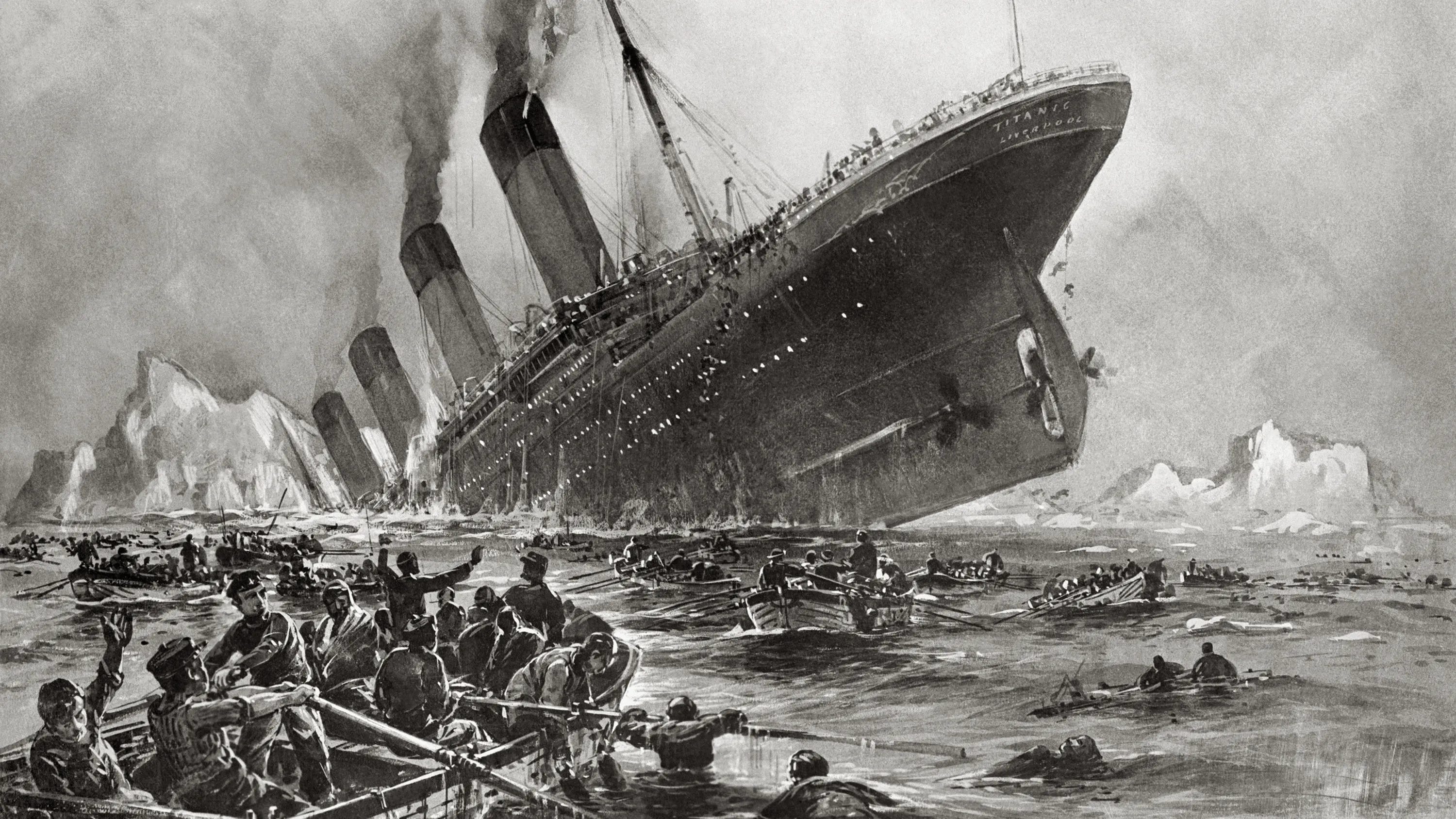
Remarkably, Titanic was designed with 16 sets of davits, each capable of handling three lifeboats, meaning it *could* have carried up to 48 wooden lifeboats. However, White Star Line opted to carry only 16 wooden lifeboats and four collapsibles, sufficient for 1,178 people. While this might seem insufficient given the ship’s full capacity of 3,547, it’s crucial to understand the regulations of the era. The British Board of Trade required vessels over 10,000 tonnes to carry only 16 lifeboats with a capacity of 990 occupants. Therefore, the White Star Line actually provided *more* lifeboat accommodation than legally required at the time.
This highlights a key historical context: lifeboats were then intended to ferry survivors from a sinking ship to a *rescuing* ship, not to evacuate the entire population or power them to shore independently. Had a nearby vessel like SS Californian responded to Titanic’s distress calls, the lifeboats might indeed have been able to ferry all passengers to safety as originally envisioned. The Titanic stood as a colossal embodiment of human progress, an engineering marvel, and a symbol of an era defined by ambition and confidence, before fate would tragically intervene.” , “_words_section1”: “1997
The grand vision and engineering marvel of the Titanic culminated in its maiden voyage, a journey anticipated with boundless excitement and an almost palpable sense of destiny. On April 10, 1912, this magnificent British ocean liner, the pride of the White Star Line, majestically departed Southampton, England. Her destination: the bustling shores of New York City, United States. Aboard were over 2,200 souls, a vibrant tapestry of humanity led by the esteemed Captain Edward John Smith, a seasoned mariner nearing the end of a long and illustrious career, whose very presence was meant to inspire confidence. This was a journey that brought together the world’s wealthiest, those accustomed to unparalleled luxury, alongside hundreds of brave emigrants from the British Isles, Scandinavia, and various corners of Europe, all clutching their dreams of a new, prosperous life across the Atlantic.
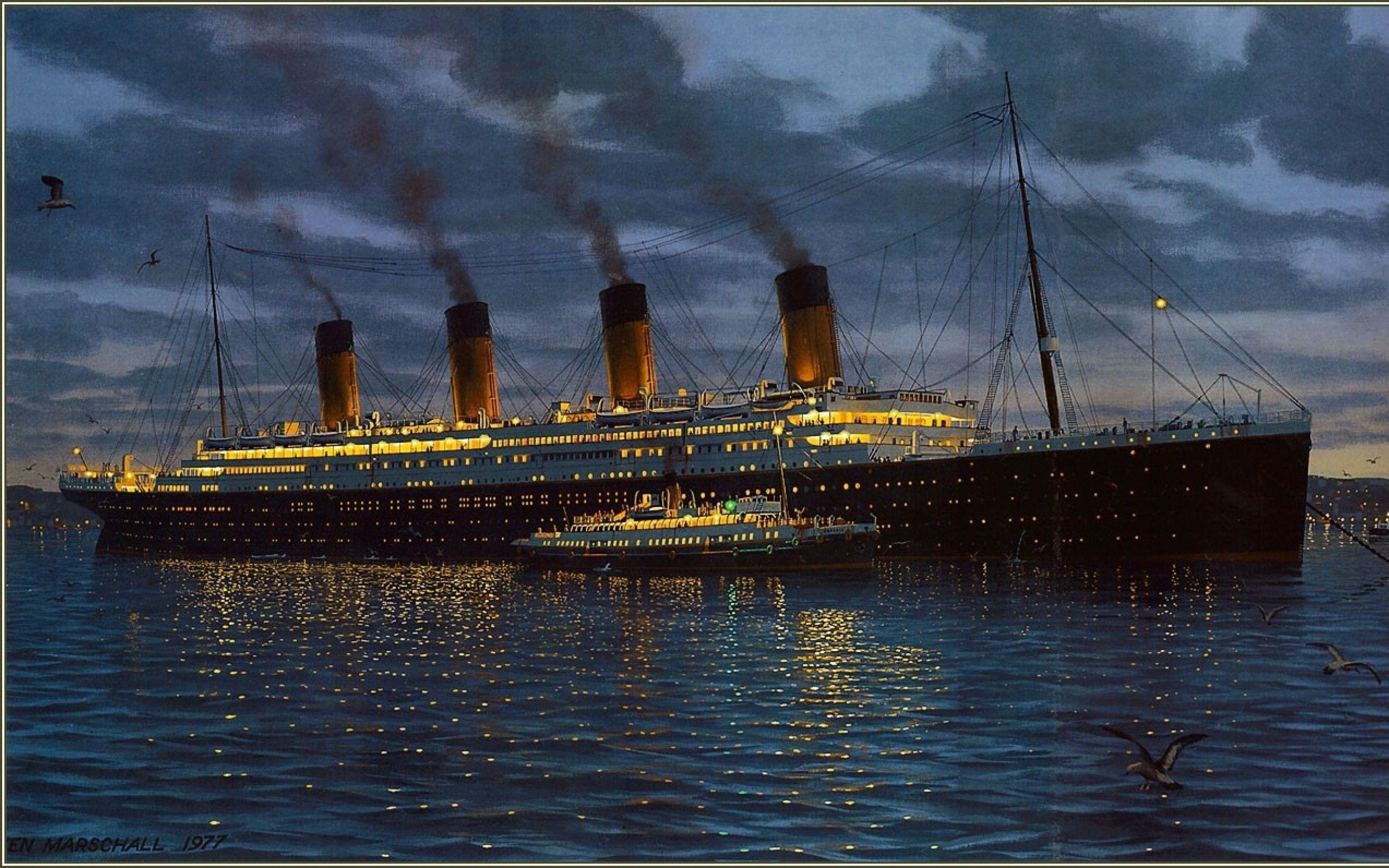
This inaugural journey, however, was tragically destined to become one of history’s most enduring and poignant tales. As the Titanic sliced through the vast, dark waters of the North Atlantic, seemingly invincible, every deck hummed with life. In the opulent First Class salons, laughter mingled with music, while in Second Class, families enjoyed newfound comforts. Even in Third Class, a sense of camaraderie and hopeful anticipation filled the air, a stark contrast to the grim steerage conditions on many other ships of the era. The ship, lauded as “unsinkable” thanks to its cutting-edge watertight compartments and remotely activated doors, truly seemed an impenetrable fortress, a testament to human ingenuity against the formidable power of the sea.
Yet, lurking beneath the tranquil surface of the Atlantic was a silent, ancient enemy: ice. Despite repeated warnings transmitted via the ship’s powerful Marconi radiotelegraph, the Titanic maintained her course and speed. It was late on the moonless night of April 14, 1912, at approximately 11:40 PM ship’s time, when destiny intervened with a chilling grace. The ship’s lookout spotted an iceberg directly in their path. A frantic attempt to turn averted a head-on collision, but the colossal vessel scraped its starboard side against the icy mass. For many passengers, the impact was barely noticeable—perhaps a slight shudder, a faint grinding sound. But below the waterline, the damage was catastrophic. The iceberg had punched a series of holes and gashes, breaching six of the ship’s sixteen primary watertight compartments.
The initial calm quickly gave way to a growing sense of dread as the true extent of the damage became apparent. Thomas Andrews Jr., the brilliant chief naval architect from Harland & Wolff, who had so meticulously designed every detail of the Titanic, was aboard for her maiden voyage. With a heavy heart, he inspected the flooded compartments and delivered a grim, unshakeable prognosis: the ship was doomed. He estimated, with chilling precision, that the Titanic had perhaps an hour and a half, maybe two, before she would vanish beneath the waves. This desperate timeline set off a chain of events that would unfold with heart-wrenching speed.
Panic, though initially contained, began to spread as the reality of the situation sunk in. The ship’s state-of-the-art radio room, manned by operators Jack Phillips and Harold Bride, became a frantic hub of activity. Their powerful 5-kilowatt rotary spark-gap transmitter, famous for its distinctive musical tone, broadcast distress calls under the call sign MGY across a radius of 350 miles, desperately pleading for assistance. Help was indeed summoned, with the Cunard liner Carpathia responding, but she was agonisingly far away, hours from reaching the scene. The world listened in, holding its breath, as the MGY signal grew fainter.
Product on Amazon: Intex Krystal Clear Saltwater System for Above-Ground Pools up to 15,000 Gallons
Brand: Visit the Intex Store
Price: 267 USD
Rating: 4.2 Total reviews: 9304
Item Weight: 17.11 Pounds
Item Form: Granular
Product Benefits: Reduces Chemical Use, Inexpensive to Maintain, Maintains Clean Sanitized Water
UPC: 078257266692
Features:
1. UPGRADE TO A SALTWATER POOL – Enjoy the same process used for in-ground swimming pools to keep your above ground pool sparkling clear with the ease of less maintenance
2. ADVANCED FILTERING SYSTEM – Simply connect to the filter pump, add salt to your above ground pool water and the rest is automatic through the system
3. CONTROL PANEL – The saltwater system is designed with an intuitive control panel display with easy access buttons for effortless scheduling and cleaning
4. FRESH AND CLEAN WATER – Experience the benefits of upgrading your above ground pool to a saltwater pool; enjoy a clean swmming environment for up to a 15,000-gallon pool
5. HYDROAERATION TECHNOLOGY – It’s all in the bubbles; patented HydroAeration Technology by INTEX when using our filtration systems improves overall water circulation, clarity, and freshness in thousands of above ground pools
Top Review from US: “This is our third year (installed summer 2018) having an intex 15’x4’ above ground pool. We used chlorine and the pump that came with the pool the first year. Changing the filters and using chlorine was not blowing my skirt up. The filters had to be replaced every two weeks minimum, and the chemicals were somewhat challenging to keep balanced. We decided last year to upgrade to a salt water system. I didn’t look at a sand filter due to cost. We bought an upgrade summer 2019 salt water pump, which used the same disposable filters. The pump was adequate, but we still had to skim the water with a net to get out the layer of bugs and bio matter from the trees for about 10-15 minutes before swimming each and every day. To be fair, there are three trees that contribute to the mess. We got the pool ready this year (2020), but the pump would not operate. We knew we had to buy a new one.I do quite a bit of research on most products I purchase, especially a bigger purchase such as this pump…. …”
Shopping on Amazon >>
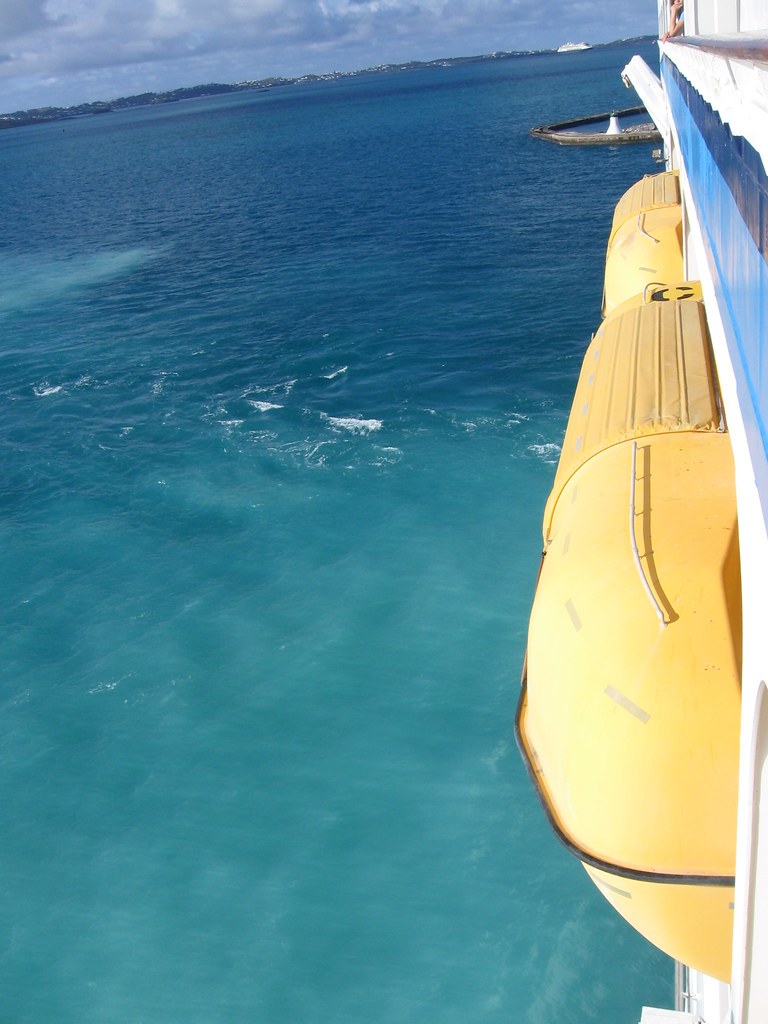
Amidst the chaos, a desperate, often confused, evacuation began. The ship carried twenty lifeboats in total: fourteen standard wooden ones, four collapsible boats, and two emergency cutters. While the White Star Line had exceeded the legally required number of lifeboats for a vessel of the Titanic’s size, the provision was still woefully inadequate for all on board. These twenty boats could accommodate 1,178 people—roughly half the number of passengers and crew actually aboard, and a mere third of the ship’s full carrying capacity. It was a stark reminder that lifeboats were then primarily intended to ferry survivors to a *rescuing* ship, not to evacuate an entire population.
The agonizing command of “women and children first” echoed across the Boat Deck, leading to scenes of unimaginable heartbreak and self-sacrifice. Husbands bid farewell to wives they would never see again, mothers clung to their children, making wrenching choices. Yet, paradoxically, many lifeboats were launched into the icy blackness of the North Atlantic far from full. The confusion, the lack of proper training for lifeboat drills, the reluctance of some passengers to leave the brightly lit, seemingly stable ship for the terrifying unknown, and the sheer disorganization meant that, on average, the lifeboats departed with only 60% of their capacity. A tragic waste of precious space, a haunting what-if in the annals of this disaster.
As the Titanic’s bow dipped deeper, her stern rose ominously into the night sky. The sheer scale of the ship meant it buckled under the strain. Remarkably, the ship’s electrical plant, strategically located in the stern, remained operational until the very last few minutes, a testament to thoughtful engineering. This kept the lights blazing, illuminating the horror for those still on board and providing a haunting spectacle for those watching from the lifeboats below. The magnificent First Class Grand Staircase, that soaring symbol of Edwardian elegance, was ultimately destroyed during the sinking, becoming a silent, gaping void in the ship’s submerged structure.
Product on Amazon: Split In Half Titanic Bath Boat And Pool Toy,Break In Half RMS Titanic Toys For Kids, Historically Accurate Breakable Titanic Toy, Titanic Ship, Titanic Cake Topper, Titanic Figurine, Titanic Boat, Titanic Replica
Brand: Visit the Sands Original Products Store
Price: 29.99 USD
Rating: 4.6 Total reviews: 114
Features:
1. 🛳️ Ahoy, adventurous souls! Behold this marvelously detailed Titanic Toy that splits in half! Spanning 8 inches with vivid, full-color detail, this unique model offers an exciting way to explore history—watch as it separates to reveal the dramatic moment that changed maritime history! 🌊❄️
2. 🖌️ Crafted with premium, full-color 3D printing technology, every lifeboat, chimney, and deck detail is meticulously captured. And with its split feature, you can recreate the ship’s legendary story, making history come alive in your hands.
3. 🎯 This interactive Titanic model isn’t just a keepsake—it’s an experience! Whether you’re reenacting the fateful event or displaying it proudly, its stunning design and intricate details make it a truly unique addition to any collection.
4. ✨ Your support means the world! By bringing home this split-in-half Titanic, you’re not just owning a piece of history—you’re supporting a passionate, Michigan-based shop. So hoist the anchor, set sail, and embark on a journey of discovery! ⚓️🎈
Top Review from US: “This is an awesome toy and it is definitely worth the price. It is sturdy in the water and it floats very well. It splits well and looks like the real ship. It is very small so it is portable.”
Shopping on Amazon >>

In the frigid pre-dawn hours of April 15, 1912, at approximately 2:20 AM, just two hours and forty minutes after striking the iceberg, the RMS Titanic finally succumbed. The largest ship afloat, once a beacon of human achievement and technological prowess, broke apart and vanished into the icy depths of the North Atlantic. Of the estimated 2,224 passengers and crew aboard, approximately 1,500 souls perished, making it one of the deadliest peacetime sinkings of a single ship in history. Captain Edward John Smith, fulfilling the ancient maritime tradition, bravely went down with his ship, a final, poignant act of resolve. In a stark contrast, J. Bruce Ismay, White Star Line’s chairman, managed to secure a spot in a lifeboat and survived the catastrophe, a decision that would forever cast a shadow over his life.
The immediate aftermath was a harrowing tableau of survival and immeasurable loss. The RMS Carpathia, racing against time, arrived on the scene hours later, a beacon of hope in the vast emptiness. She pulled 705 shivering, traumatized survivors from the lifeboats and the treacherous waters. The statistics of survival painted a grim and poignant picture: women and children from First Class had the highest survival rates, a stark indicator of the social hierarchies of the time, while many Third Class passengers and male crew members, particularly those toiling in the engine rooms, faced the lowest chances of survival. The human toll was devastating, a collective gasp of disbelief and sorrow echoed around the world.
The Titanic disaster immediately seized global public attention, transcending mere news to become a profound cultural earthquake. It wasn’t merely a shipping accident; it shattered the prevailing Edwardian era’s unwavering confidence in technological progress and humanity’s perceived mastery over nature. Investigations were swiftly launched on both sides of the Atlantic, leading to fundamental and enduring transformations in maritime safety regulations. Among the most crucial were mandates that would become the cornerstone of modern sea travel: every vessel must carry enough lifeboats for every single person on board, ships must maintain continuous 24-hour radio watches to prevent missed distress signals, and the establishment of the International Ice Patrol, an organization dedicated to ceaseless monitoring of iceberg activity in the North Atlantic. These vital changes, born from unimaginable tragedy, have undoubtedly saved countless lives in the century and more that followed.
Read more about: The 21 Most Costly Accidents and Screwups in History
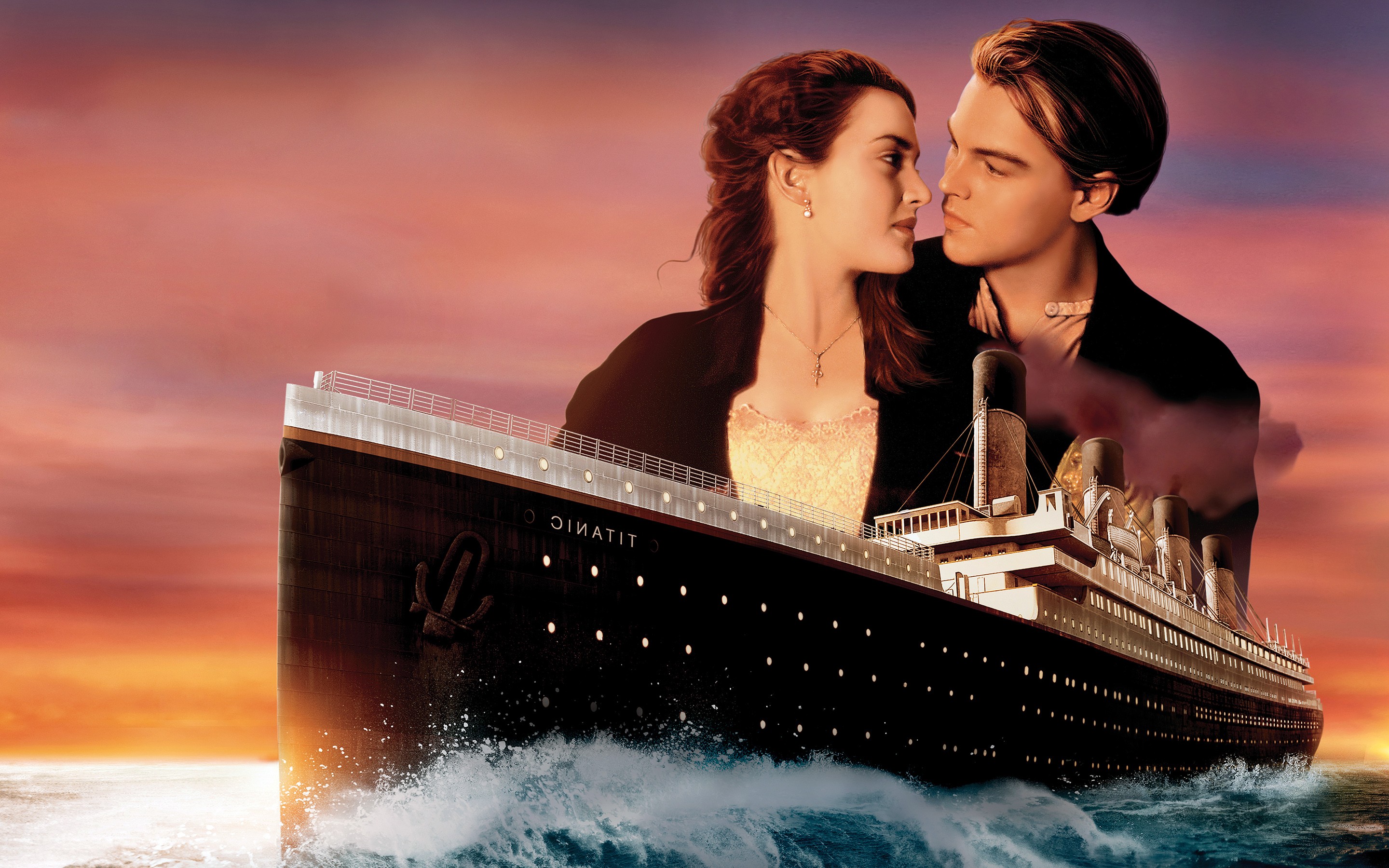
Beyond the vital regulatory reforms, the Titanic disaster cemented its place as an indelible part of our collective consciousness, inspiring a lasting legacy that continues to captivate and resonate. Through countless books, songs, plays, and films, the story of the Titanic has been retold and reinterpreted across generations, becoming a powerful, multifaceted metaphor. It embodies themes of human ambition, the perils of hubris, the stark realities of class divide, and the incredible resilience of the human spirit in the face of insurmountable odds. It is a narrative that continues to provoke thought and emotion, perpetually reminding us of the profound human element behind every grand endeavor and the unpredictable, awe-inspiring power of the natural world.
It bears noting that, remarkably, this was not the first time the White Star Line had experienced such a crushing blow; the RMS Tayleur suffered a similar, though less widely known, fate on her maiden voyage in 1854. However, the sheer scale of the Titanic’s loss, combined with its unparalleled reputation as the “unsinkable” ship and the prominence of its passengers, ensured that its tragedy would forever be etched into the collective memory of humanity. The wreck itself, discovered decades later, remains a haunting, silent memorial to the lives lost, drawing explorers and researchers who seek to understand and honor the past.
The Titanic, a ship designed to be the zenith of luxury and safety, paradoxically became the ultimate symbol of maritime catastrophe. Her brief, dramatic life, from the initial audacious vision to her tragic demise, encapsulates a pivotal moment in history – a profound transition from an era of unwavering faith in industrial might to a more sober, humbled recognition of humanity’s limitations and the critical, ongoing need for vigilance, preparedness, and humility when confronting the raw power of the elements. The dream of an “unsinkable” vessel was shattered, but in its monumental collapse, it inadvertently forged a new, far safer future for sea travel, its enduring legacy carried not just in memory, but in every mandatory lifeboat drill and every meticulous ice warning issued on the oceans today.



